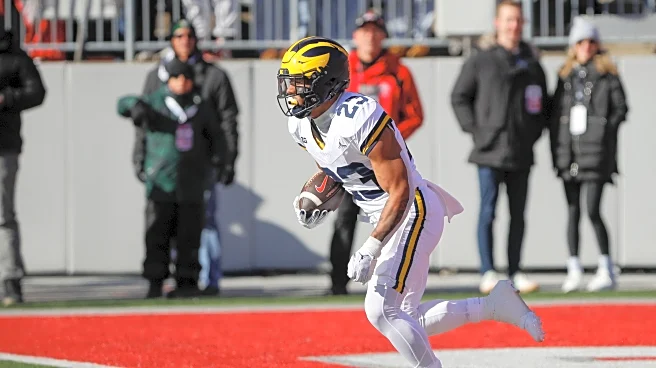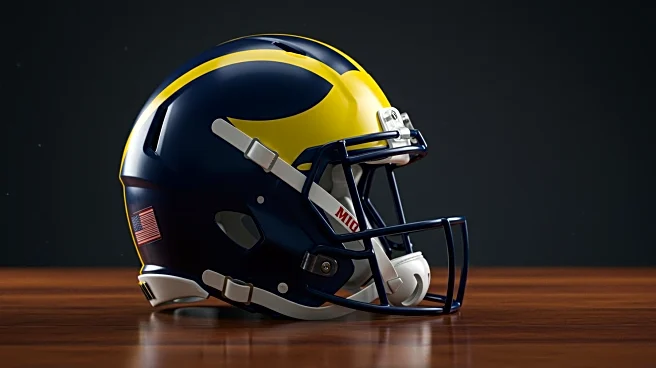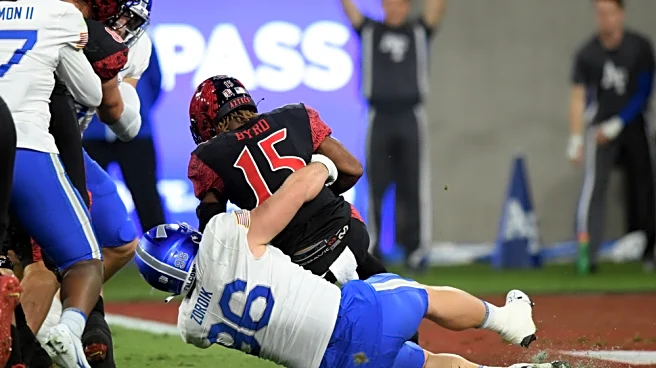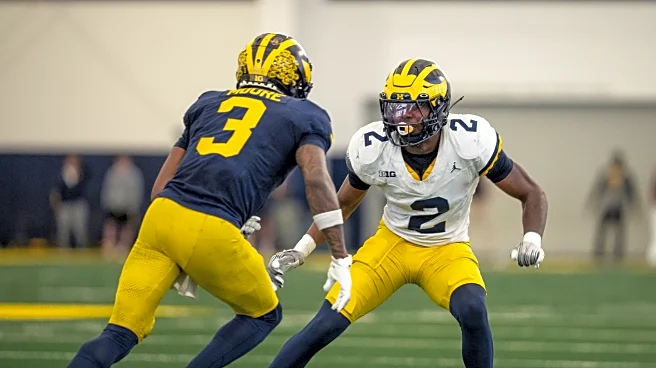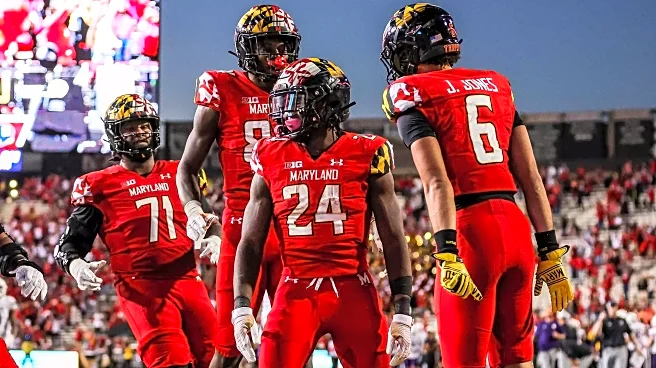
Every team rotates at running back in today’s world (except for Boise State apparently, as Ashton Jeanty had over 300 more carries than the next back in the room last season lol). But with rosters at top schools deeper than ever, and wear and tear a growing concern for young rushers thinking about their NFL futures, the running back committee is now a staple across college football, with bell cows becoming a thing of the past.
For the Michigan Wolverines, who lean on the ground as much as any of the sport’s
top teams, it becomes even more necessary to have multiple running backs capable of doing damage. Even with the departures of both Kalel Mullings and Donovan Edwards, the Wolverines are in a great spot with Jordan Marshall and Justice Haynes ready to suit up at RB1 and RB2. The only question remains what exactly that split will look like.
A clear model
I want to avoid overloading this piece with numbers upon numbers, but I think it is important to at least define a baseline. Therefore, here are the running back carry shares from the past four years of Michigan backfields (including players who earned at least 5% of all RB carries for the season):
2021: Hassan Haskins (57%), Blake Corum (31%), Edwards (7%)
2022: Corum (50%), Edwards (28%), CJ Stokes (11%)
2023: Corum (57%), Edwards (26%), Mullings (8%)
2024: Mullings (49%), Edwards (34%), Marshall (8%), Benjamin Hall (8%)
There are some obvious nuances here, but for the most part, Michigan has had its lead back take on 50-60% of the work, with RB2 getting somewhere between 25-35%. There is a non-negligible amount of usage available for RB3 due to injury, garbage time, bowl games, etc., but the third back has not really materialized into anything too great.
Same but different
Obviously, 2021-23 were a bit different than 2024 in terms of a clearly presumed RB1 coming into the year. Perhaps Edwards was supposed to be that player last season, but his skill set was always heavy on the lightning and light on the thunder, making the ascension of Mullings not all that surprising. Either way, 2025 definitely feels closer to 2024 than the prior three seasons, with the main seat left vacant and no pre-defined successor.
The other thing to consider is that Marshall and Haynes are much more similar to each other than Corum and Edwards were (or Mullings and Edwards), for example. Someone with Edwards’ profile is always facing an uphill battle to become the lead back; in that regard, the decision kind of made itself the past three seasons. Sherrone Moore and Chip Lindsey head into this season with two players that can do a lot of different things, with neither particularly standing out significantly ahead of the other in any of those regards. This is a deviation from recent years.
So, how will it play out?
Do not be mistaken: this is a great place to be. Michigan has multiple options that it can plug-and-play without changing its offense at all, with both players seemingly offering a high ceiling and a pretty sizable floor. This is nothing new for the Wolverines, who have had excellent running backs for a long time now, but is very encouraging after losing over 90% of last season’s running back carries.
It is really difficult to predict how the final numbers shake out, though I think the pathway will make itself clear during the year, be it due to one player just looking significantly better or (not to jinx it) someone getting injured. I think the gap will be much closer to 15 percentage points (like 2024) than 30 (like 2021 or 2023), but I do not think a completely even workload breakdown is the end state.
As good as Marshall was to close out the year — and despite his prior experience in Ann Arbor — it is really hard to not get excited about Haynes’ talent. This is a former top-50 recruit who is only here because of the transfer portal. He may start the season as RB1-b, but once both players get significant reps over the first month, I think the newcomer will have worked his way to the top.
If I am wrong, it likely comes due to Marshall being great more than Haynes flopping, which is also good news! And while a 50-50 split would somewhat surprise me, that also means both players are performing up to the coaching staff’s standards. This season might look a little different out of the Michigan backfield (and next season’s will be different again), but this has more to due with the makeup of the top candidates than any deficiencies in the running back room.
